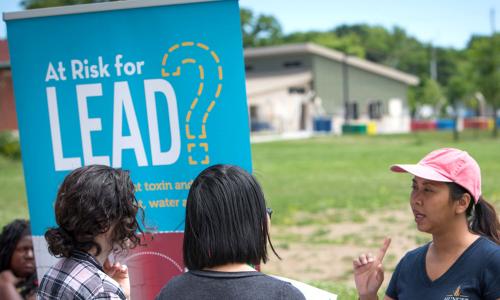The National Rifle Association used its influence over a Congressman to codify language that prevents the Centers for Disease Control and Prevention (CDC) from funding research into gun violence, which kills and injures tens of thousands of people in the US each year.
Research on gun violence is not inherently political. However, its results can inform policy changes to protect public health, potentially including restrictions on gun access. And this has made gun violence research a target for the National Rifle Association (NRA), which is primarily funded by contributions, grants, royalty income, and advertising from the firearms industry.
During the 1990s, the NRA used its influence over NRA member and Arkansas Rep. Jay Dickey to insert an amendment into the federal spending bill that has effectively prevented the Centers for Disease Control and Prevention (CDC) from funding any research on gun violence.
In 1993, a CDC-funded study in the New England Journal of Medicine found that firearms kept at home increased the risk of homicide by someone in the household, rather than offering protection. Soon after this article was published, the NRA launched a targeted campaign to eliminate “anti-gun propaganda” within the National Center for Injury Prevention and Control at the CDC. Study author Dr. Arthur Kellerman remembers receiving a note from the research coordinator for the NRA’s Institute for Legislative Action: “It said something to the effect of, ‘Dear Art: With publication of your last study, you have graduated from the public health file to your own, named file at the NRA headquarters.’”
In 1996, Dickey, a lifelong NRA member and self-described “point man” for the NRA, inserted this provision into the federal spending bill that targeted the CDC’s $2.6 million in annual funding to study gun violence: “None of the funds made available for injury prevention and control at the Centers for Disease Control and Prevention may be used to advocate or promote gun control.” As a result,the National Center for Injury Control and Prevention, the research arm that had produced the 1993 study, was disbanded.
The NRA moved quickly to quash similar research at other agencies. In 2009, the NIH’s National Institute on Alcohol Abuse and Alcoholism funded a study that examined whether carrying a gun increases or decreases the risk of firearm assault. In 2012, Congress extended the CDC language to all Department of Health and Human Services agencies, including the NIH.
The NRA has taken credit for blocking government gun violence research. In 2011, the organization said, “These junk science studies and others like them are designed to provide ammunition for the gun control lobby by advancing the false notion that legal gun ownership is a danger to the public health instead of an inalienable right.”
But even as the NRA doubled down on its quest to stop research on the gun violence epidemic, the namesake of the Dickey amendment changed his mind about the policy decision he had helped create. In 2015, the former member of Congress told the Huffington Post, “I wish we had started the proper research and kept it going all this time. I have regrets.”
In the meantime, the NRA continues to spend over $3 million in lobbying and over $1 million in political contributions annually, pushing for policies that promote gun ownership while research into the public health consequences of that ownership is stalled. The suppression of all federal gun violence research has meant that, for over two decades, there has been very little scientific study of basic questions about gun violence, even as 93 Americans are killed by guns every day.




